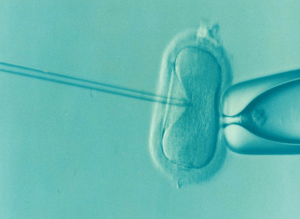In Vitro Fertilization with 3 Parents
In Vitro Fertilization has taken a new level; mitochondrial donation has changed the way babies are made. Thanks to this technique three–parent in vitro fertilization is now possible.
Until March 5, 2015, babies were conceived from the DNA of a woman and a man; but this has changed. UK is on the process to allow conception of babies from the DNA of three parents: two women and a man. This new method of In Vitro Fertilization would slow, among others, the transmission of certain serious diseases, the scientists say.
The conception of babies from three different donors is now possible thanks to an improved transfer DNA (T-DNA) technique which allows scientists to prevent transmission of mitochondrial diseases, researchers report in a study published in the British scientific journal Nature.
Mitochondrial diseases are inherited neuromuscular disorders that can be present at birth or develop later in life. The diseases are caused by mutations, or changes, in genes that produce proteins inside the mitochondria. Mitochondrial diseases run in families and transmitted exclusively by women.
To prevent the transmission, scientists have for years developed various in vitro fertilization techniques (IVF) which require 3 parents for a child: the father sperm, the nucleus of the egg of the mother and the enucleated egg of a female donor.
In Vitro Fertilization through mitochondrial donation
The technique, developed in Britain and called “pronuclear transfer” (PNT), involves taking the egg nucleus of the future mother susceptible to carry the defective mitochondria and fertilize it with sperm from the father, and then transfer it into the healthy enucleated egg of the donor.
Thus, a fertilized egg from a man and two women, with the genetic characteristics of both parents but mitochondrial DNA from the healthy donor – which represents about 1% of the total DNA contained in a human cell. This form of in vitro fertilization is called mitochondrial donation.
The fertilized egg is then reimplanted into the uterus of the mother, as in the case of a conventional in vitro fertilization. This technique aims to eliminate mitochondrial abnormalities that cause serious degenerative diseases affecting muscles, eyes, brain or heart.
It is estimated that 1 child in 5,000 is born with such abnormalities. Mitochondria have their own DNA different from that contained in the nucleus. This technique, therefore, considerably reduces the risk of the disease.
By reducing to eight hours (instead of 24 hours) the time between fertilization and the pronuclear transplantation (PNT), the researchers obtained a near disappearance of abnormalities of mitochondrial DNA. These will not henceforth exceed 2% in 79% of blastocysts, the first stage of the embryo.
“We believe that this technique will offer women the opportunity to reduce their risk of transmitting mitochondrial diseases to their children,” said Mary Herbert, one of the British researchers who participated in the study.
As a result, Britain has become the first country in the world to legalize the controversial technique to conceive babies from three donors: 3-Parent In Vitro Fertilization. The first babies from this technology could be born soon.




